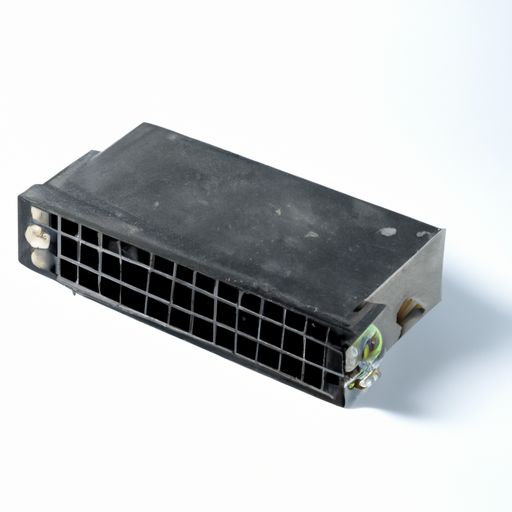

Title: Understanding Product Standards for Signal Buffers

1. Definition and Importance of Signal Buffers (200 words) Before delving into product standards, it is essential to understand the purpose and significance of signal buffers. Signal buffers are electronic devices that amplify and stabilize signals, ensuring their integrity during transmission. They are commonly used in various applications, including telecommunications, audio systems, and data communication networks. By isolating the input and output circuits, signal buffers prevent signal degradation caused by impedance mismatch, capacitive loading, or other factors.
2. Electrical Performance Standards (300 words) Signal buffers must meet specific electrical performance standards to ensure reliable signal transmission. These standards define parameters such as gain, bandwidth, input/output impedance, noise level, and distortion. Gain refers to the amplification factor, while bandwidth determines the range of frequencies the buffer can handle. Input/output impedance ensures proper signal matching, while noise level and distortion impact signal quality. Compliance with these standards guarantees that the signal buffer will perform consistently and reliably in various applications.
3. Environmental Standards (300 words) Signal buffers are often exposed to various environmental conditions, such as temperature, humidity, and vibration. Environmental standards ensure that signal buffers can withstand these conditions without compromising their performance. These standards define temperature ranges, humidity levels, and vibration resistance limits that the device must meet. Compliance with environmental standards ensures the signal buffer's durability and reliability in different operating environments.
4. Safety Standards (300 words) Safety standards are crucial for signal buffers, as they ensure the protection of users and the surrounding equipment. These standards cover aspects such as electrical insulation, grounding, and protection against electrical hazards. Compliance with safety standards guarantees that the signal buffer is designed and manufactured to prevent electrical shocks, short circuits, and other potential risks. It also ensures that the device meets the necessary certifications and regulatory requirements for safe usage.
5. Compatibility Standards (200 words) Signal buffers must be compatible with various signal types and voltage levels to cater to different applications. Compatibility standards define the input and output voltage ranges, signal types (analog or digital), and signal levels that the buffer can handle. Adhering to compatibility standards ensures that the signal buffer can seamlessly integrate into existing systems without causing signal distortion or incompatibility issues.
Conclusion (100 words) Signal buffers are essential components in electronic systems, ensuring the integrity and quality of signals during transmission. Adhering to product standards is crucial for manufacturers to produce reliable and compatible signal buffers. Electrical performance, environmental, safety, and compatibility standards provide guidelines for designing, manufacturing, and testing these devices. By complying with these standards, manufacturers can ensure consistent performance, durability, and safety of signal buffers. Additionally, consumers can make informed decisions based on these standards, selecting signal buffers that meet their specific requirements.
Title: Understanding Product Standards for Signal Buffers

1. Definition and Importance of Signal Buffers (200 words) Before delving into product standards, it is essential to understand the purpose and significance of signal buffers. Signal buffers are electronic devices that amplify and stabilize signals, ensuring their integrity during transmission. They are commonly used in various applications, including telecommunications, audio systems, and data communication networks. By isolating the input and output circuits, signal buffers prevent signal degradation caused by impedance mismatch, capacitive loading, or other factors.
2. Electrical Performance Standards (300 words) Signal buffers must meet specific electrical performance standards to ensure reliable signal transmission. These standards define parameters such as gain, bandwidth, input/output impedance, noise level, and distortion. Gain refers to the amplification factor, while bandwidth determines the range of frequencies the buffer can handle. Input/output impedance ensures proper signal matching, while noise level and distortion impact signal quality. Compliance with these standards guarantees that the signal buffer will perform consistently and reliably in various applications.
3. Environmental Standards (300 words) Signal buffers are often exposed to various environmental conditions, such as temperature, humidity, and vibration. Environmental standards ensure that signal buffers can withstand these conditions without compromising their performance. These standards define temperature ranges, humidity levels, and vibration resistance limits that the device must meet. Compliance with environmental standards ensures the signal buffer's durability and reliability in different operating environments.
4. Safety Standards (300 words) Safety standards are crucial for signal buffers, as they ensure the protection of users and the surrounding equipment. These standards cover aspects such as electrical insulation, grounding, and protection against electrical hazards. Compliance with safety standards guarantees that the signal buffer is designed and manufactured to prevent electrical shocks, short circuits, and other potential risks. It also ensures that the device meets the necessary certifications and regulatory requirements for safe usage.
5. Compatibility Standards (200 words) Signal buffers must be compatible with various signal types and voltage levels to cater to different applications. Compatibility standards define the input and output voltage ranges, signal types (analog or digital), and signal levels that the buffer can handle. Adhering to compatibility standards ensures that the signal buffer can seamlessly integrate into existing systems without causing signal distortion or incompatibility issues.
Conclusion (100 words) Signal buffers are essential components in electronic systems, ensuring the integrity and quality of signals during transmission. Adhering to product standards is crucial for manufacturers to produce reliable and compatible signal buffers. Electrical performance, environmental, safety, and compatibility standards provide guidelines for designing, manufacturing, and testing these devices. By complying with these standards, manufacturers can ensure consistent performance, durability, and safety of signal buffers. Additionally, consumers can make informed decisions based on these standards, selecting signal buffers that meet their specific requirements.